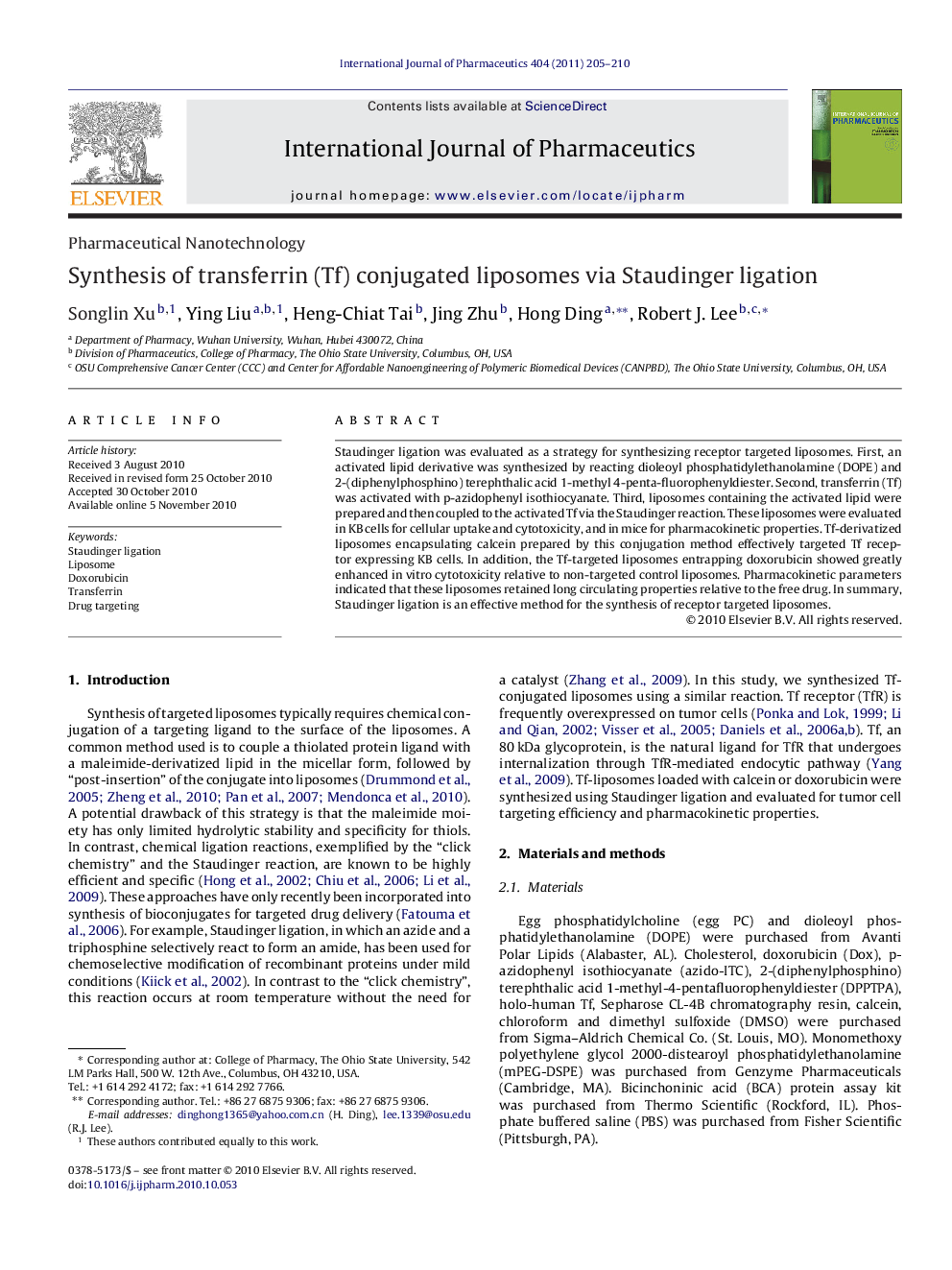| Article ID | Journal | Published Year | Pages | File Type |
|---|---|---|---|---|
| 5821272 | International Journal of Pharmaceutics | 2011 | 6 Pages |
Staudinger ligation was evaluated as a strategy for synthesizing receptor targeted liposomes. First, an activated lipid derivative was synthesized by reacting dioleoyl phosphatidylethanolamine (DOPE) and 2-(diphenylphosphino) terephthalic acid 1-methyl 4-penta-fluorophenyldiester. Second, transferrin (Tf) was activated with p-azidophenyl isothiocyanate. Third, liposomes containing the activated lipid were prepared and then coupled to the activated Tf via the Staudinger reaction. These liposomes were evaluated in KB cells for cellular uptake and cytotoxicity, and in mice for pharmacokinetic properties. Tf-derivatized liposomes encapsulating calcein prepared by this conjugation method effectively targeted Tf receptor expressing KB cells. In addition, the Tf-targeted liposomes entrapping doxorubicin showed greatly enhanced in vitro cytotoxicity relative to non-targeted control liposomes. Pharmacokinetic parameters indicated that these liposomes retained long circulating properties relative to the free drug. In summary, Staudinger ligation is an effective method for the synthesis of receptor targeted liposomes.
Graphical abstractReaction schemes of Tf-liposomes by Staudinger ligation.Download high-res image (21KB)Download full-size image
